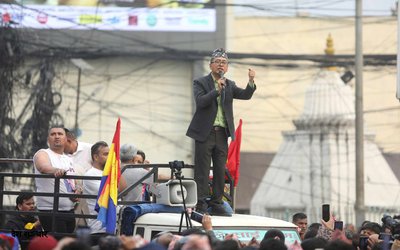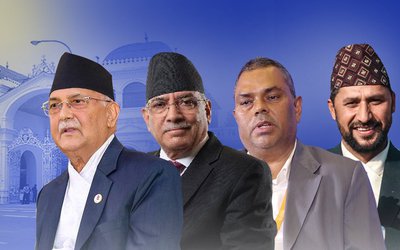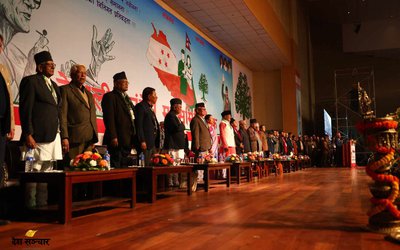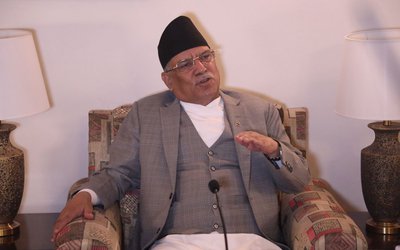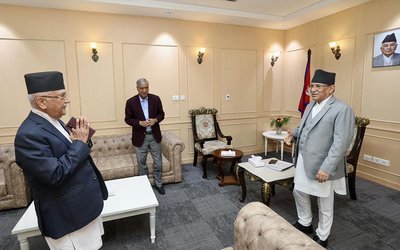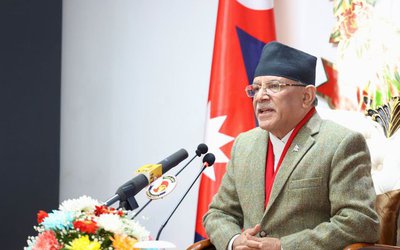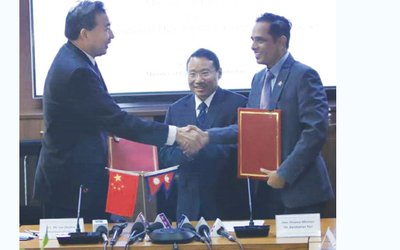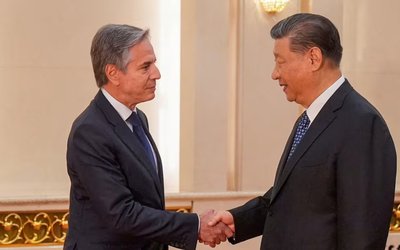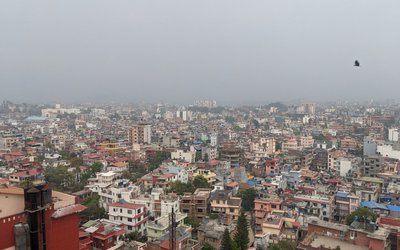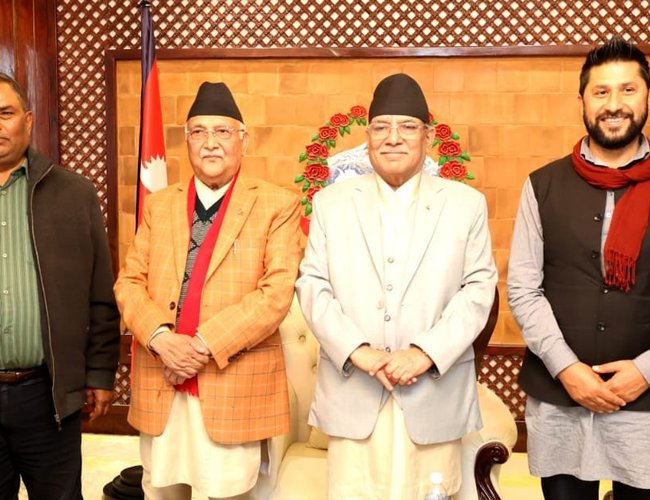
The Maoist leader Pushpa Kamal Dahal attempted to alter the coalition over a month ago, but the rivalrous Nepali Congress leaders did not foresee the government's collapse until the very last minute.
Dr. Shekhar Koirala, General Secretaries Gagan Thapa and Bishwo Prakash Sharma, and other members of the anti-Deuba wing of the NC stated their belief that the NC will run in all next elections without making an alliance with the Maoist-Center. As a result, Maoist Center leaders and CPN-UML leader KP Oli have begun to get along.
CPN-Maoist center leader and Prime Minister Prachanda did not make a big issue when Dr. Koirala's group joined with CPN-UML to form the government in Koshi Province. The alliance between the Maoist-Center and NC was broken after the Maoist candidate from Koshi Province was defeated in the National Assembly due to the Koirala faction's betrayal.
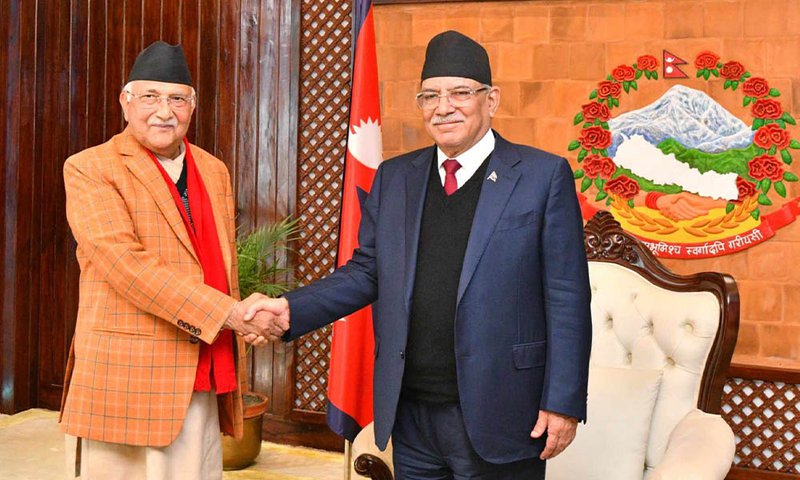
Despite this, a faction of Nepali Congress leadership has continued to make statements against the Maoist Center. Furthermore, Prime Minister Prachanda was uncomfortable working with some of the ministers from the Nepali Congress.
Prime Minister Prachanda requested NC leader Sher Bahadur Deuba to recall three ministers from NC including Finance Minister Dr. Prakash Sharan Mahat, Minister of Industry, Commerce and Supply Ramesh Rijal, and Minister of Health and Population Mohan Bahadur Basnet. However, the NC leadership, including President Deuba, rejected the request.
With limited options before him, Prachanda turned to his arch critic KP Sharma Oli, who was also desperately trying to restore his friendship with him. After a series of meetings, Oli accepted the offer. NC leaders, including Deuba and his colleagues, did not take note of this development until the last minute.
Prime Minister 'Prachanda' severed his Maoist party's 15-month alliance with the Nepali Congress on March 4th and formed a coalition with the CPN-UML, which had withdrawn support from him in February 2023. The coalition also includes the Swantra Party, CPN-US, and Samajbadi Janta Dal.
Prachanda's Maoist Centre is the third-largest party in the 275-member House of Representatives, with 32 members. The Nepali Congress, with 89 members, is the largest, followed by CPN-UML, which has 78 seats. The RSP, with 21 members, stands fourth in strength.
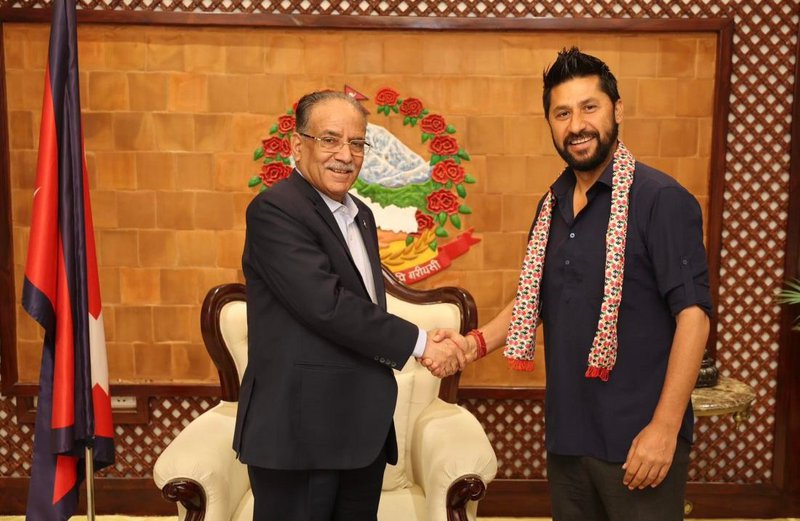
The CPN-UML, CPN-Maoist, CPN-US, RSP, and JSP together have a total of 153 seats in the 275-member House, which is more than the required minimum of 138 seats.
Comments of Parties
After the new equation took formal shape, Prachanda accused the Nepali Congress of being a 'reactionary force' that was trying to use him. Nepali Congress leaders also accused Prachanda of being dishonest.
Sher Bahadur Deuba, a Nepali Congress leader and former Prime Minister, expressed disappointment in Prachanda's dishonesty to his party colleagues.
Prachanda stated that his Maoists are not static forces and that they know when and where to make changes. He also said in another program that political upheavals will continue as long as he is alive.
Ganesh Shah, the secretary of the CPN-Maoist, said that they were forced to seek a new alliance as the Nepali Congress did not cooperate with the Prime Minister. On December 25, 2022, with the support of CPN-UML, Prachanda became the Prime Minister for the third time. Prachanda broke the alliance with the Nepali Congress, the largest party in the House of Representatives. He then joined hands with the CPN-UML led by Oli, who was considered Prachanda's top critic.
The change of equations at the center is likely to cause a change of government in all seven provinces. All of them are coalition governments. Nepali Congress leaders backing to host pro-Tibetan lobby’s supported International Conference in Lumbini, which was scheduled for March 11 and 12 in Lumbini. The even, which would have seen ten Nobel Peace laureates and some heads of state, has canceled following the change of government. Chinese government has vehemently opposed the conference.
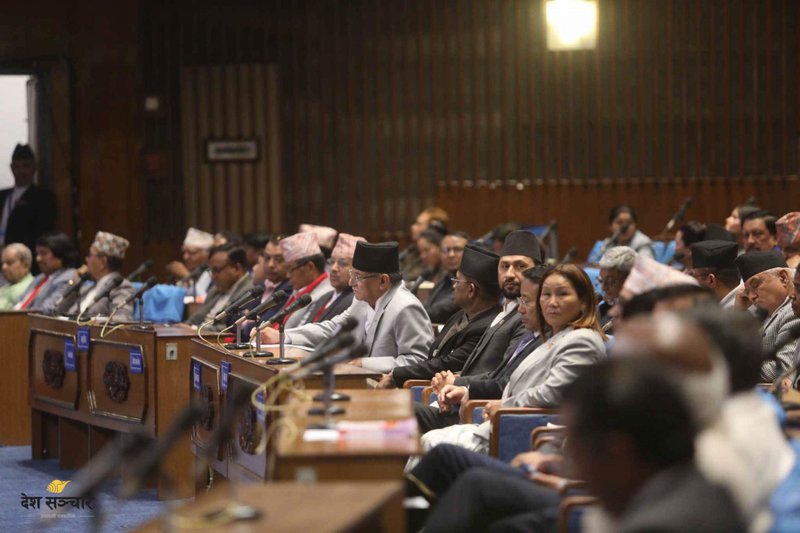
Left led alliance is now in power but there are still many areas where the CPN-Maoists and the CPN-UML have differences. The adoption of the Transitional Justice Bill remains a crucial area of concern.
The Maoists are seeking blanket amnesty for their leaders and activists for human rights violations during the insurgency from 1996 to 2006, which the UML opposes.
Instability All The Times
Situated in geographically most unstable region with two great power, the frequent change of governments is not surprising in Nepal, and it would not be surprising if the Maoists return with the Nepali Congress in the coming months and year.
Nepal has a history of short-term governments in its 60 years of democratic progression. The current reconfiguration is not a new.
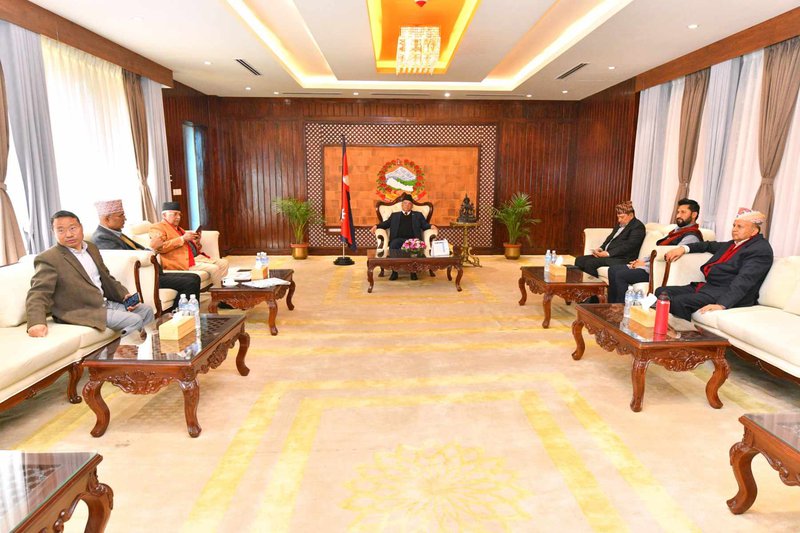
Although it is reported that the Maoists severed ties with the NC due to power sharing, political discontent, ideological differences, underperformance, and pressure to restore Nepal to a Hindu state, no body recalled the history of Nepal.
Role of External Force
As in the past, conspiracy theories about the involvement of external powers in politics have become more widespread than analysis of the internal political dynamics that create a conducive environment for fallout. Given the Nepal’s history, there are also reasons to see external factor behind the fall of government.
Besides Nepali media and intellectuals, Indian media has already started blaming China for the sudden change of political alignments in Nepal. All Indian major newspapers including Nepali media reported that the left parties coming together to form a coalition government has all the signs of Chinese involvement behind the scenes.
According to Nihar R Nayak, a Research Fellow at the Manohar Parrikar Institute of Defence Studies and Analyses and an expert on issues pertaining to Nepal, India has always been uncomfortable with Left governments in Kathmandu.
Nayak also stated that the second-rung leaders of both the CPN-Maoist and CPN-UML believe that their parties should contest elections together. He stated that the individual who negotiated on behalf of the CPN-Maoist to form this new coalition government is pro-China. He believes that China is behind all of this.
However, Nepali international experts hold opposing views to Nayak. Aviation expert Hemant Arjyal stated that the new alliance was created by India. Arjyal wrote in X wall, 'Nothing new here, same old Indian ranting.'
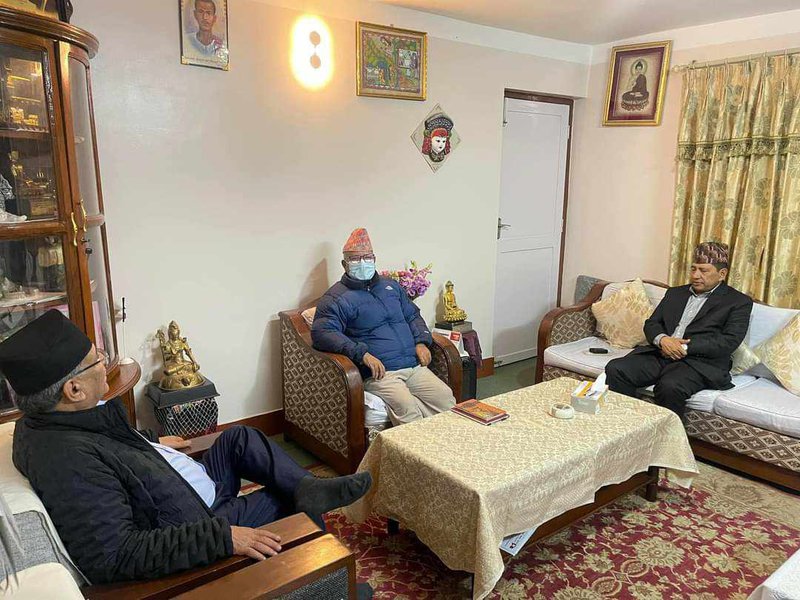
Other Indian experts have stated that India has enjoyed a comfortable working relationship with the Nepali Congress and the Maoists. Although Maoists were a challenging party for New Delhi to work with when Dahal first became prime minister in 2008, the two have since developed a strong working relationship.
India's upcoming general elections, which are less than a month away, make this an inopportune time for a change of government in the neighborhood.
Nepal has become a crucial point of interest for both China and India amidst the ongoing geostrategic maneuvers in the Himalayas.
China Factor
China considers Nepal's border with Tibet as a significant security concern, leading Beijing to increase its efforts to enhance its relationship with Kathmandu through the Belt and Road Initiative (BRI). India aims to maintain its longstanding 'special ties' with Nepal, emphasizing the intricate interplay of strategic interests in the region.
The Left Alliance's emergence in Nepal has raised concerns for India, and it may also lead to changes in Nepal's partnership with the United States, a significant development ally.
In conclusion, the Left Alliance's resurgence in Nepal indicates a shift in power dynamics that affects both domestic politics and regional geopolitics. Nepal's foreign policy may lean more towards Beijing as China's influence grows, potentially challenging India's interests.
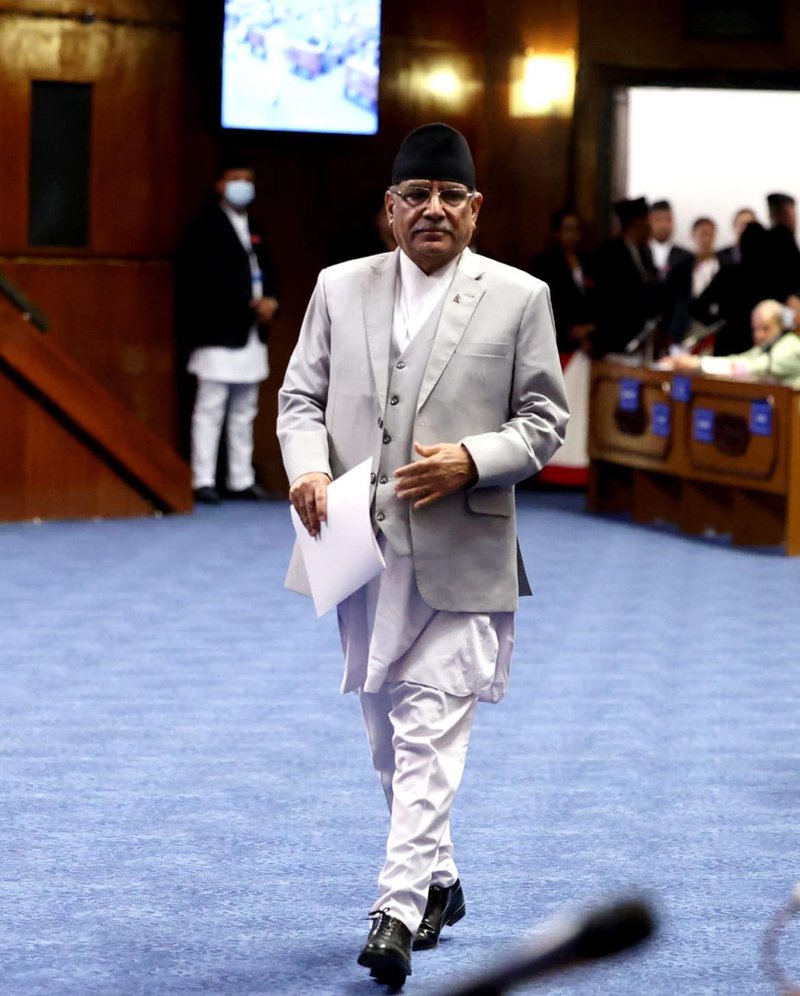
Chinese Foreign Ministry spokesperson Mao Ning stated that China aims to collaborate with the new government to uphold the Five Principles of Peaceful Coexistence, deepen their traditional friendship, and strengthen practical cooperation.
Additionally, China intends to advance the China-Nepal strategic partnership of cooperation, featuring everlasting friendship for development and prosperity, and deliver more benefits to the people of both countries.
Mao Ning, spokesperson for the Chinese Foreign Ministry, stated that China highly values its relations with Nepal as a friendly neighbor and cooperation partner. Mao Ning, an official from China, expressed a desire to work with the new government to uphold the Five Principles of Peaceful Coexistence, deepen the traditional friendship, strengthen practical cooperation, advance the China-Nepal strategic partnership of cooperation featuring ever-lasting friendship for development and prosperity, and deliver more benefits to the people of the two countries.
Mao Niang made this statement during a discussion about India's advantage.
India’s Advantage
India and Nepal share strong religious and cultural ties, which have fostered warm relations between the two countries. Despite this, some cultural traditions have changed since the abolition of the monarchy and the rise of communist, including Maoist, power.
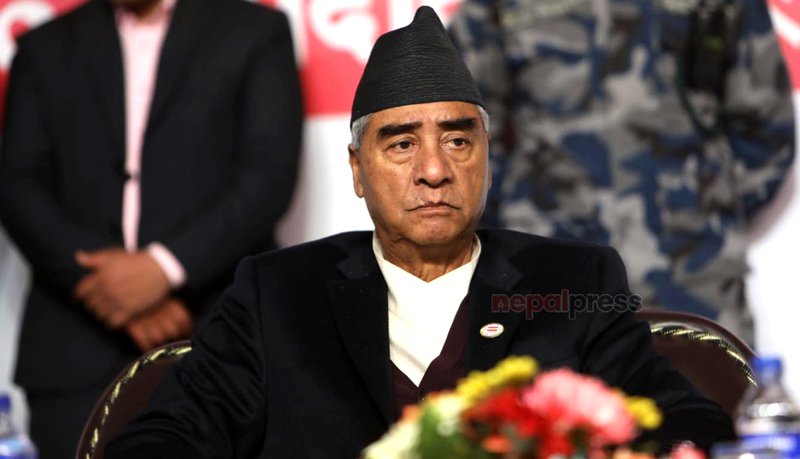
It is important to note, however, that Nepal's spiritual ties with India remain strong. After the inauguration of the Ram Temple in Ayodhya, tens of thousands of Nepalese have been visiting the shrine to show their solidarity.
This indicates that the relationship between Nepal and India is above politics and remains close. Regardless of whether people like it or not, Nepal is a part of the Indian subcontinent, connected to India through shared civilization and geography.
After meeting with newly appointed Foreign Minister Narayan Kazi Shrestha, Indian Ambassador Naveen Srivastava said the relationship between Nepal and India is unique, rock solid and based on mutual trust and expressed India's willingness to support Nepal and increase investment in the future.
Srivastava conveyed Indian Foreign Minister S Jaishankar's greetings to Shrestha on assuming the roles of Deputy Prime Minister and Minister for Foreign Affairs. The Foreign Ministry reported this.
There are speculations that India is unhappy with the dissolution of the alliance between the Nepali Congress and the CPN (Maoist Centre) and the formation of the new coalition between the CPN-UML and the Maoist Centre. However, Indian Ambassador to Nepal Srivastava has clarified that India's policy towards Nepal remains unchanged.
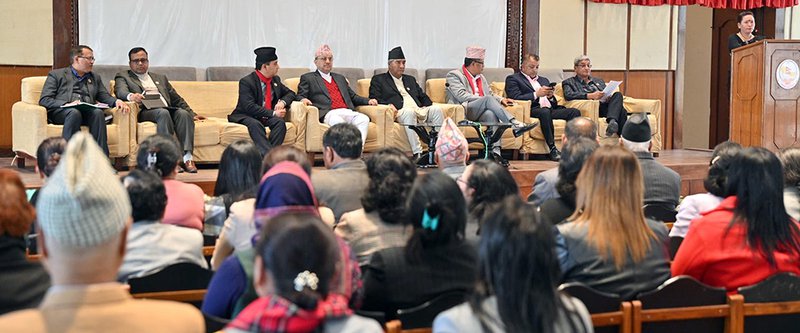
The Indian ambassador made the statement one day after Prime Minister Prachanda restructured his Cabinet and added new ministers from the CPN-UML, his own party CPN (Unified Socialist), and the Rastriya Swatantra Party.
In separate meetings on Thursday, the Indian envoy conveyed India's position and view on the new power equation in Kathmandu to Deputy Prime Minister and Foreign Minister Narayan Kaji Shrestha and Finance Minister Barsha Man Pun.
During his meetings with Shrestha and Pun, the Indian ambassador stated that India considers the political change in Nepal as an internal matter.
Some political circles perceive that the new ruling coalition was orchestrated at the behest of China.
“The change in the government is an internal affair of Nepal,” said ambassador Srivastava, adding that is why I want to convey that India’s position towards Nepal will remain unchanged.” Our partnership and cooperation with Prime Minister Pushpa Kamal Dahal which has been continuing for a year and a half, is satisfactory. We will also work in a similar spirit and trust in the future.”
Power Sharing
Ministers from CPN (Maoist Center), CPN (UML), Rashtriya Swatantra Party (RSP), and CPN (Unified Socialist) took the oath today.
Narayan Kaji Shrestha from the CPN (Maoist Center) was sworn in as Deputy Prime Minister and Minister for Foreign Affairs. Barsha Man Pun was appointed as the Minister for Finance, Shakti Bahadur Basnet as the Minister for Energy, Rekha Sharma as the Minister for Communication and Information Technology, and Hit Bahadur Tamang as the Minister for Tourism and Civil Aviation.
Raghubir Mahaseth took the oath as the Deputy Prime Minister and Minister for Physical Infrastructure and Transport. Padam Giri became the Minister for Law, Justice and Parliamentary Affairs. Hari Upreti was appointed as the Minister for Defence, and Bhagavati Chaudhari as the Minister for Women. All of them were sworn in from the CPN (UML). Rajendra Rai serves as the Minister for Water Supply, Damodar Bhandari as the Minister for Industry, Commerce and Supplies, Jwala Kumari Sah as the Minister for Agriculture and Livestock, and Balaram Adhikari as the Minister for Land Management, Cooperatives, and Poverty Alleviation. Additionally, there is a department for Children and Social Welfare.
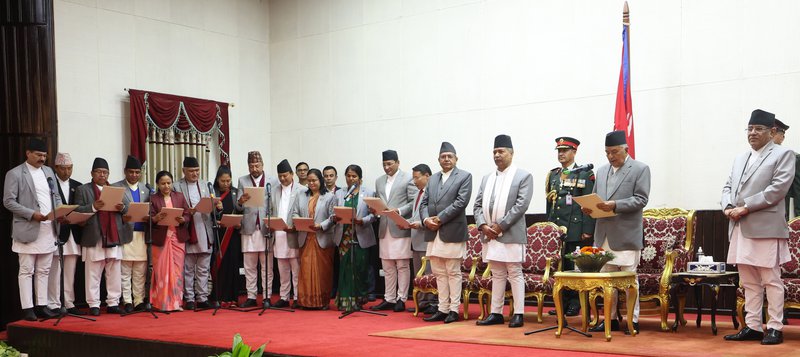
Ravi Lamichhane took the oath as the Deputy Prime Minister and Minister for Home Affairs. Dol Prasad Aryal became the Minister for Labour, Employment and Social Security. Biraj Bhakta Shrestha was appointed as the Minister for Youth and Sports, and Sumana Shrestha as the Minister for Education, Science and Technology.
Bhanu Bhakta Joshi, from CPN (Unified Socialist), was sworn in as Minister for Federal Affairs and General Administration. Dhana Bahadur Budha, also from CPN (Unified Socialist), was sworn in as Minister for Urban Development.
On Monday, March 4, Dol Prasad Aryal from RSP, Hit Bahadur Tamang from CPN (Maoist Centre), and Padam Giri from UML were also sworn in.
In the words of Arup Rajouria is his X Wall, “Nepal's political landscape shifts with the re-emergence of the left alliance highlighting the intricate balance of ideology, geopolitics and regional power dynamics, but it's also a vivid reminder of opportunism that has plagued Nepal's politics.”

Keshab Poudel
Poudel is the editor of New Spotlight Magazine.
- IWMI: SoLAR Global Science-Policy Forum Conference
- Apr 25, 2024
- CLA: Samriddhi For Skill Development
- Apr 23, 2024
- ECONOMY: Growth At 3.3
- Apr 16, 2024
- DPM’s SHRESTHA’S CHINA VISIT High Profile, Low Key
- Apr 14, 2024
- Maha Kumbha In Barahkshetra: A Sacred Festival In Sacred Koshi (Kaushiki) River
- Apr 09, 2024

